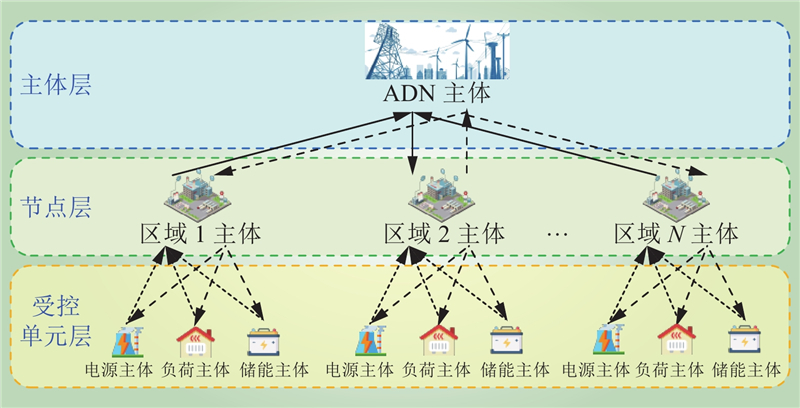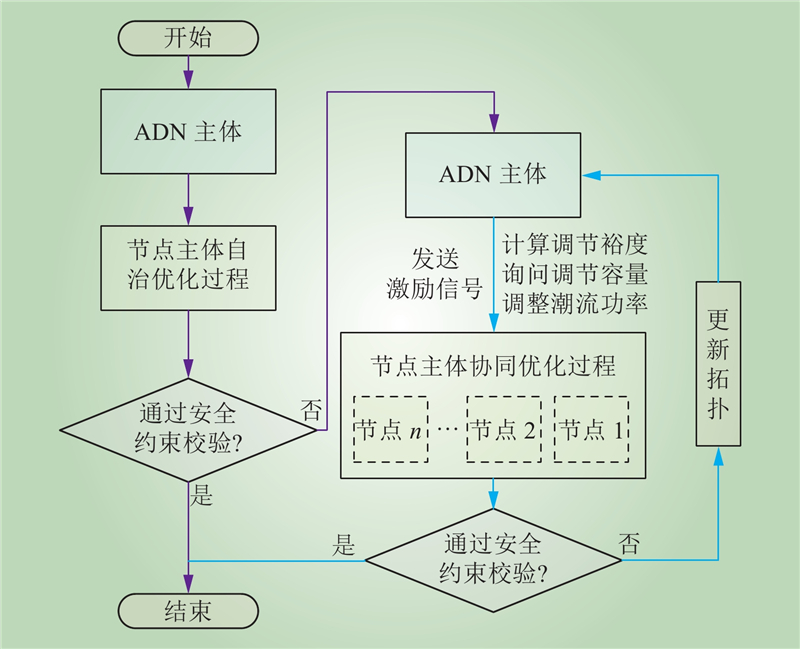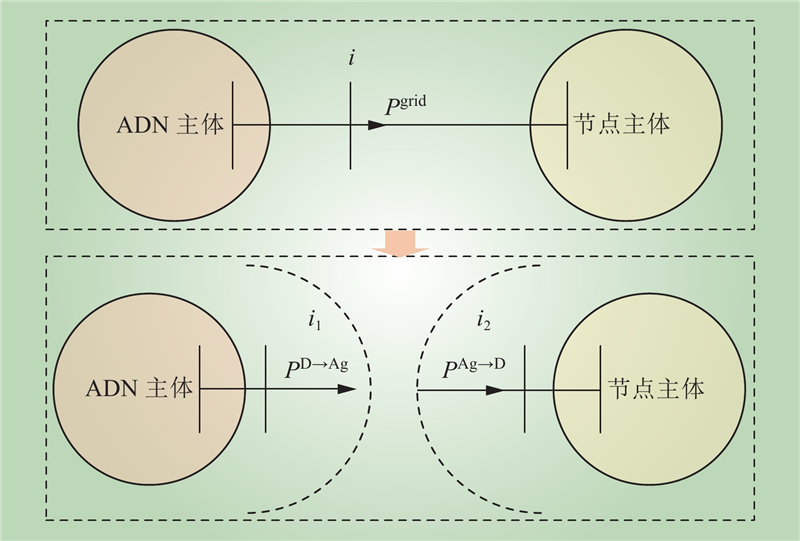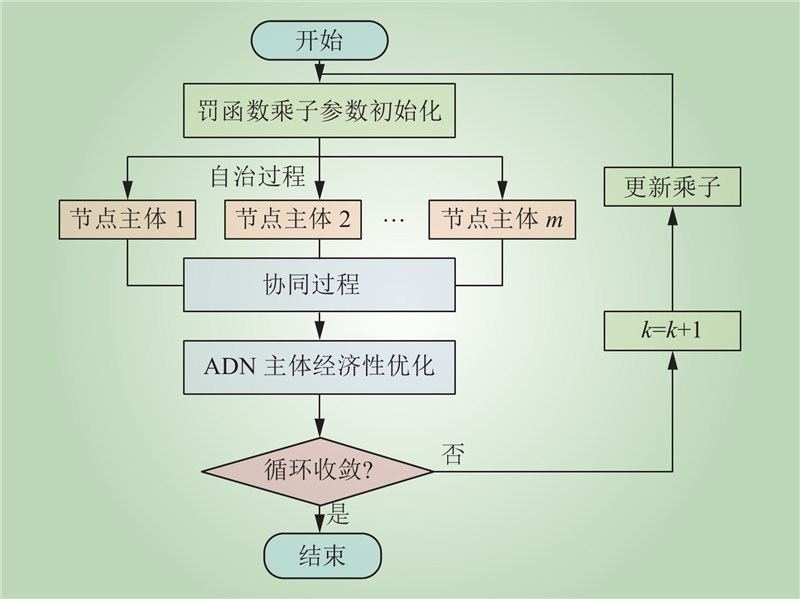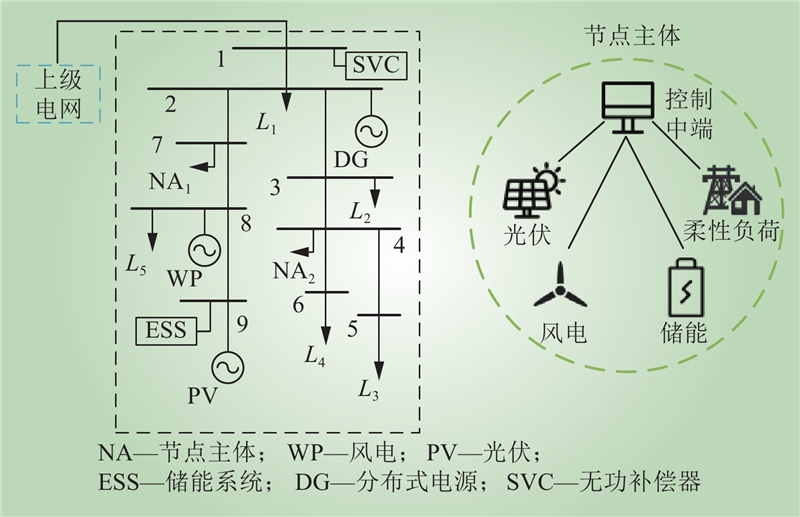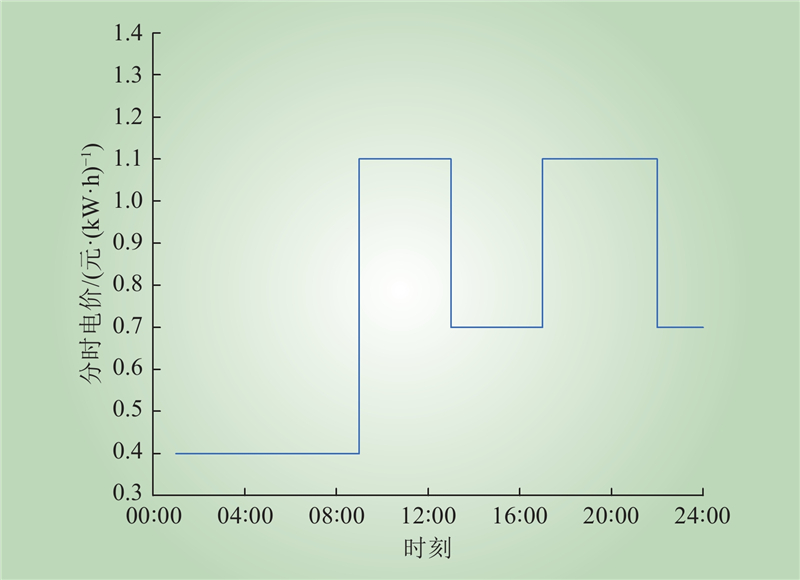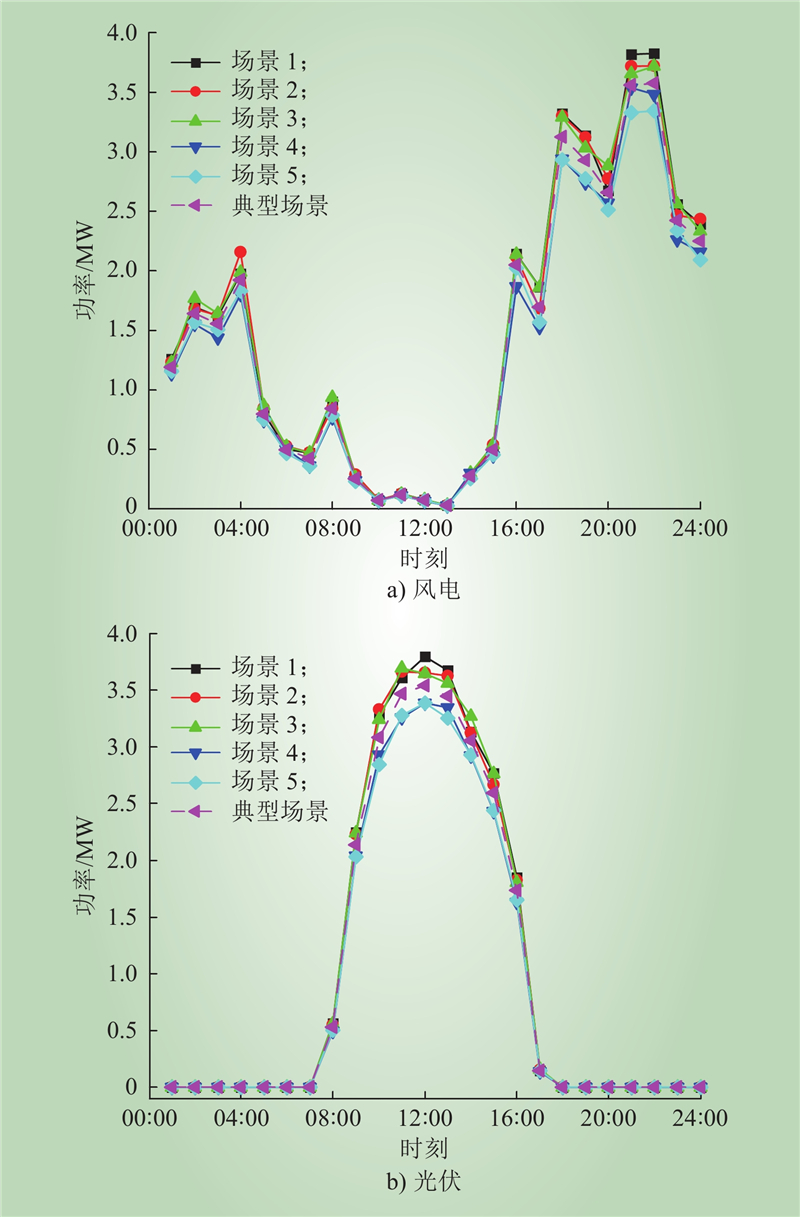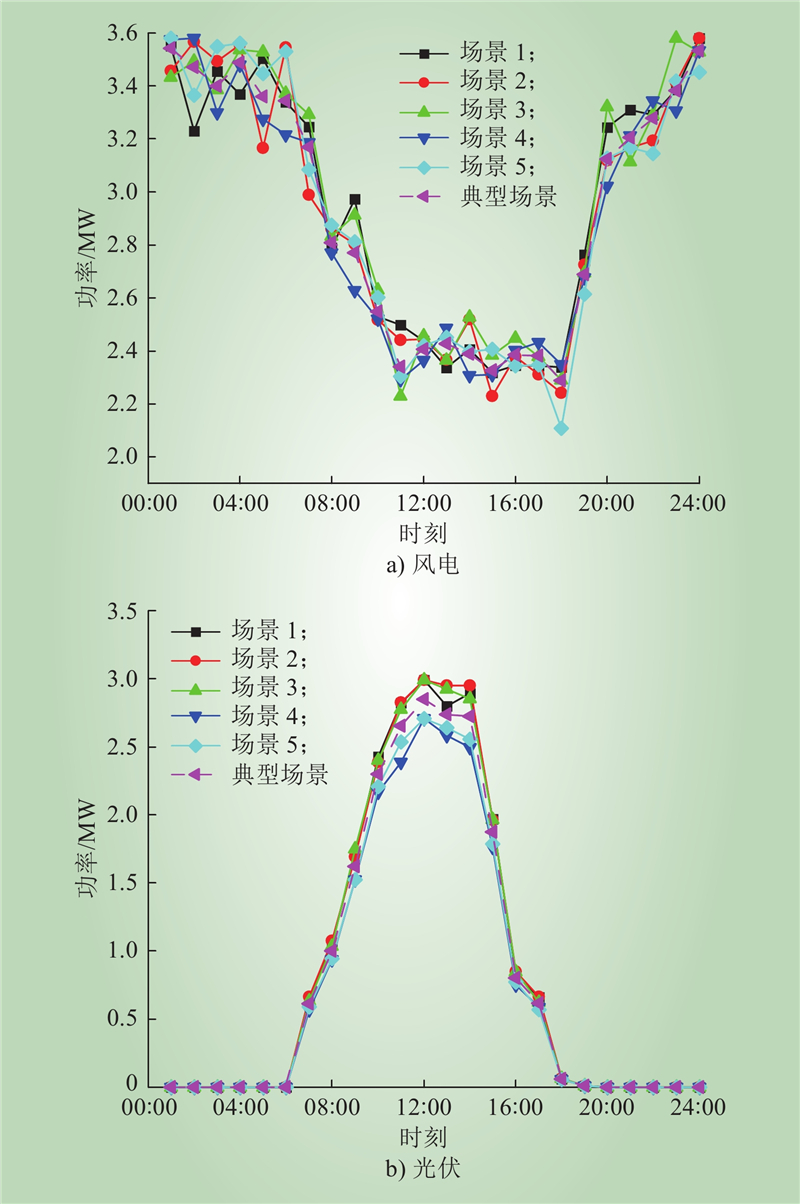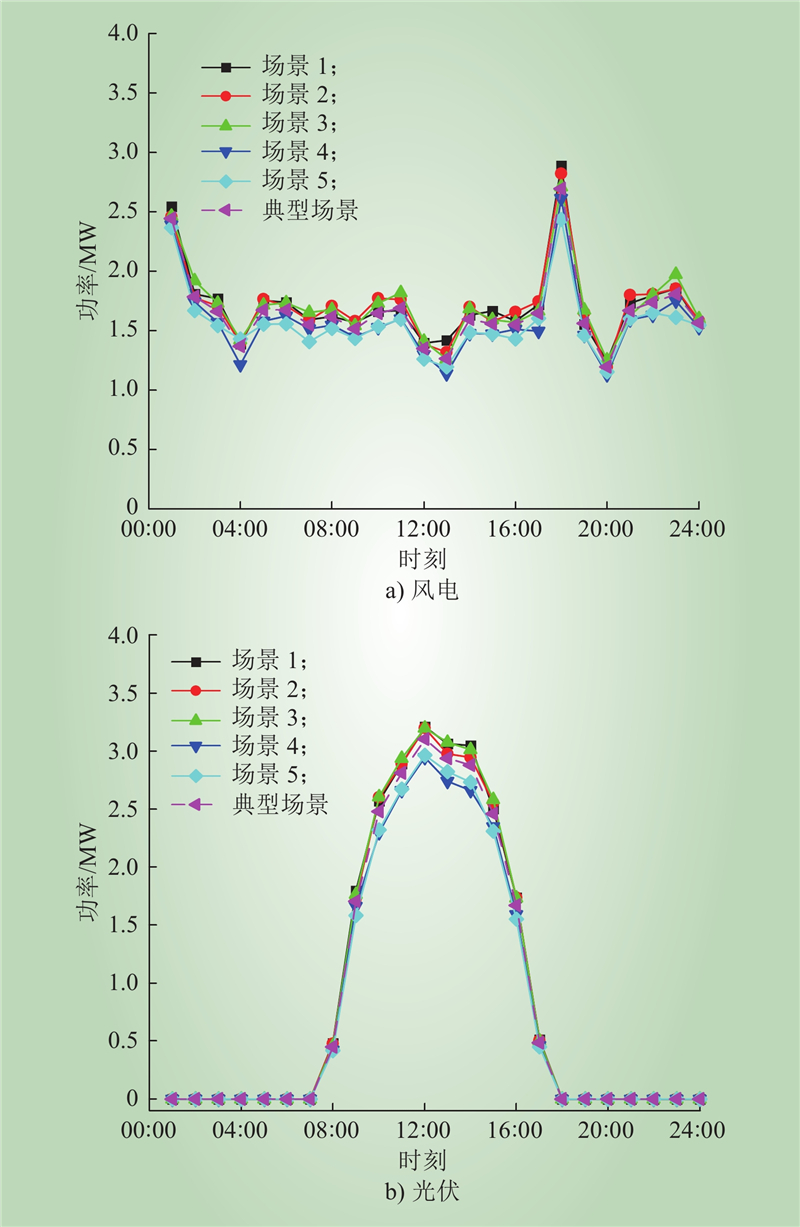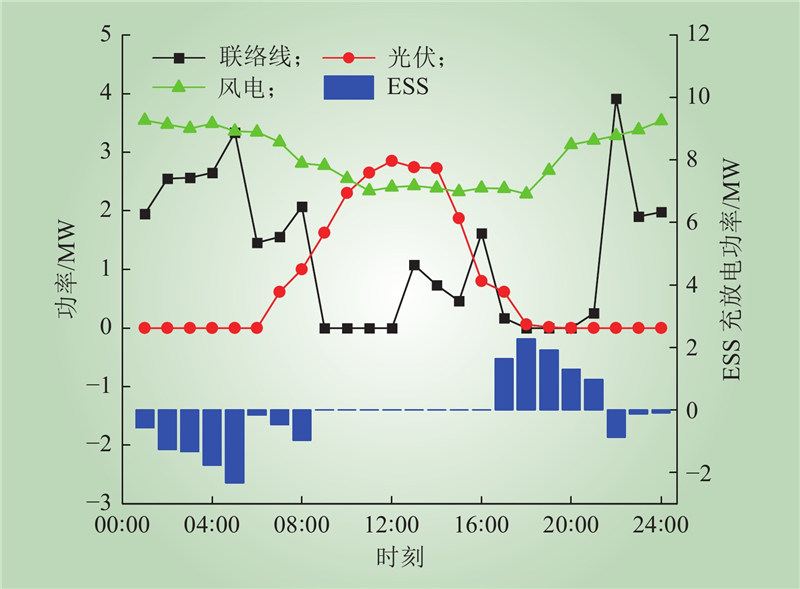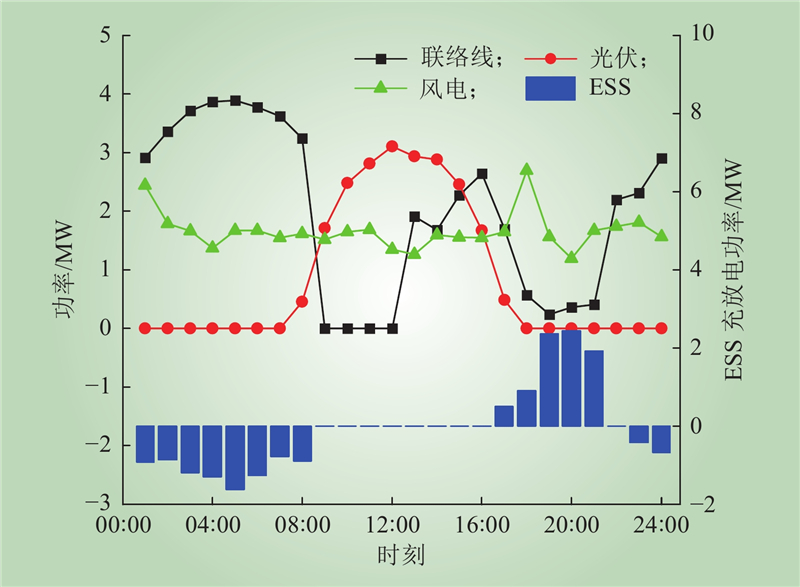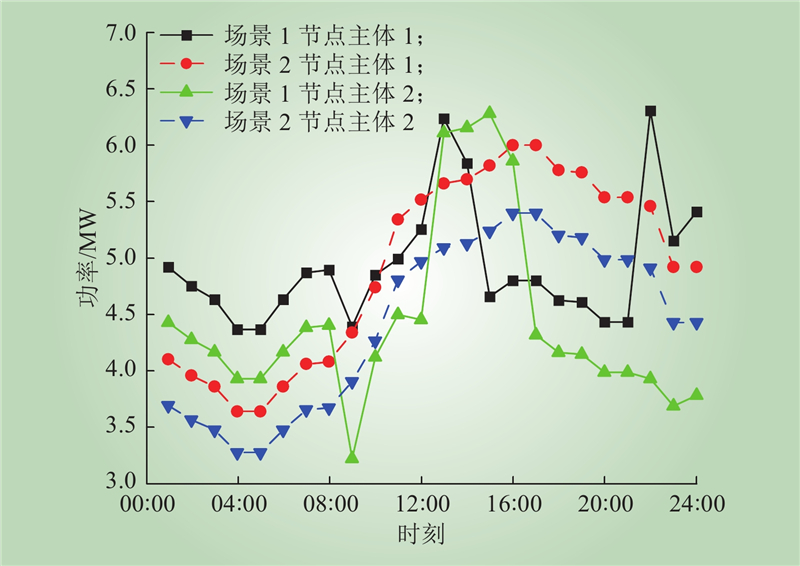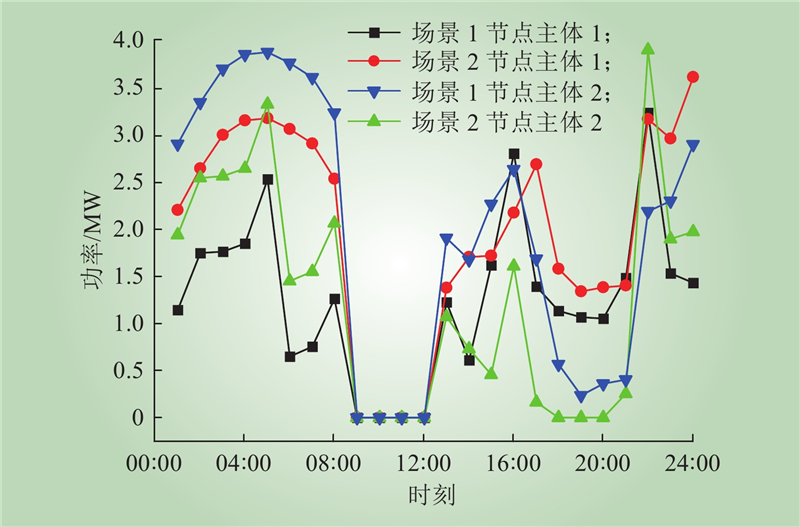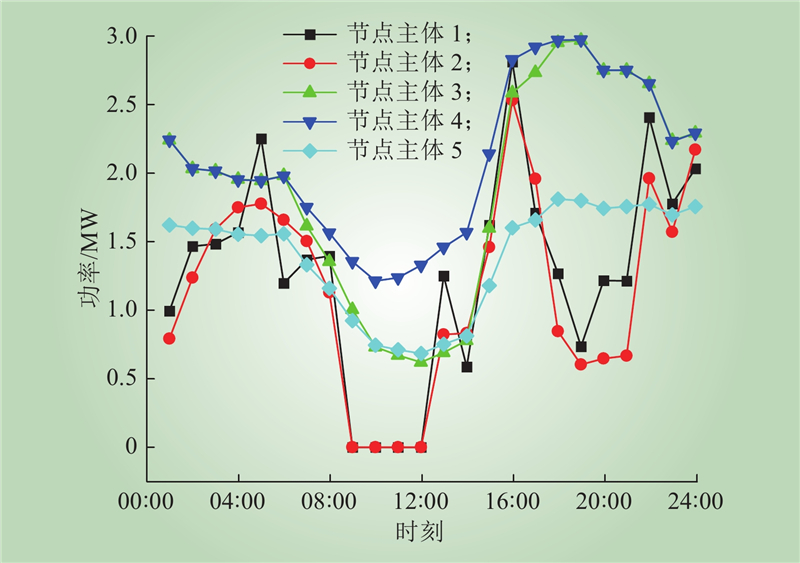| 1 |
张玉敏, 孙鹏凯, 吉兴全, 等. 基于并行多维近似动态规划的综合能源系统动态经济调度[J]. 电力系统自动化, 2023, 47 (4): 60- 68.
|
|
ZHANG Yumin, SUN Pengkai, JI Xingquan, et al. Dynamic economic dispatch for integrated energy system based on parallel multi-dimensional approximate dynamic programming[J]. Automation of Electric Power Systems, 2023, 47 (4): 60- 68.
|
| 2 |
胡福年, 张彭成, 周小博, 等. 计及灵活性资源的综合能源系统源荷协调优化调度[J]. 中国电力, 2024, 57 (5): 2- 13.
|
|
HU Funian, ZHANG Pengcheng, ZHOU Xiaobo, et al. Coordinated optimal scheduling of source and load in integrated energy system considering flexible resources[J]. Electric Power, 2024, 57 (5): 2- 13.
|
| 3 |
王秋实, 杨明, 李鹏, 等. 计及热网灵活性恢复过程的电热综合能源系统鲁棒超前调度[J]. 高电压技术, 2023, 49 (8): 3173- 3184.
|
|
WANG Qiushi, YANG Ming, LI Peng, et al. Robust look-ahead dispatch of electricity-heat integrated energy system considering the flexibility recovery period of heating networks[J]. High Voltage Engineering, 2023, 49 (8): 3173- 3184.
|
| 4 |
雷宇, 杨明, 韩学山. 基于场景分析的含风电系统机组组合的两阶段随机优化[J]. 电力系统保护与控制, 2012, 40 (23): 58- 67.
|
|
LEI Yu, YANG Ming, HAN Xueshan. A two-stage stochastic optimization of unit commitment considering wind power based on scenario analysis[J]. Power System Protection and Control, 2012, 40 (23): 58- 67.
|
| 5 |
XUE S W, ZENG S M, JIA Q Q, et al. Collaborative optimization allocation of grid-forming and grid-following reactive power resources considering auxiliary equipment services[J]. IEEE Access, 2023, 11, 95840- 95857.
DOI
|
| 6 |
XU G, ZHANG B X, YANG L, et al. Active and reactive power collaborative optimization for active distribution networks considering bi-directional V2G behavior[J]. Sustainability, 2021, 13 (11): 6489.
DOI
|
| 7 |
林旭, 蔡新雷, 孟子杰, 等. 基于双层混合整数优化的有源主动配电网电压调控设计方法[J]. 高电压技术, 2023, 49 (S1): 78- 84.
|
| 8 |
孟宇翔, 马刚, 李豪, 等. 基于绿证-阶梯式碳交易交互的源荷互补调度优化[J]. 中国电力, 2023, 56 (9): 149- 156.
|
|
MENG Yuxiang, MA Gang, LI Hao, et al. Optimal scheduling of source-load complementation based on green certificate-step carbon trading interaction[J]. Electric Power, 2023, 56 (9): 149- 156.
|
| 9 |
朱鹏程, 刘曌煜, 孙可, 等. 基于多分块交替方向乘子法的蜂巢状配电网分布式优化调度[J]. 中国电力, 2023, 56 (6): 90- 100.
|
|
ZHU Pengcheng, LIU Zhaoyu, SUN Ke, et al. Optimal scheduling of honeycomb distribution network based on BADMM[J]. Electric Power, 2023, 56 (6): 90- 100.
|
| 10 |
臧云帆, 夏晟, 李嘉文, 等. 含共享储能的微电网群分布鲁棒博弈优化调度方法[J]. 电力系统保护与控制, 2023, 51 (24): 90- 101.
|
|
ZANG Yunfan, XIA Sheng, LI Jiawen, et al. A robust game optimization scheduling method for shared energy storage micro electric network group distribution[J]. Power System Protection and Control, 2023, 51 (24): 90- 101.
|
| 11 |
LI Z M, XU Y. Temporally-coordinated optimal operation of a multi-energy microgrid under diverse uncertainties[J]. Applied Energy, 2019, 240, 719- 729.
DOI
|
| 12 |
LI Z M, WU L, XU Y, et al. Distributed tri-layer risk-averse stochastic game approach for energy trading among multi-energy microgrids[J]. Applied Energy, 2023, 331, 120282.
DOI
|
| 13 |
HERNANDEZ-ARAMBURO C A, GREEN T C, MUGNIOT N. Fuel consumption minimization of a microgrid[J]. IEEE Transactions on Industry Applications, 2005, 41 (3): 673- 681.
DOI
|
| 14 |
谢元皓, 林声宏, 朱建全. 基于广义纳什议价的多微电网配电系统多主体协同能量管理策略[J/OL]. 电力自动化设备, 1–15. (2023-07-17).https://doi.org/10.16081/j.epae.202307015.
|
|
XIE Yuanhao, LIN Shenghong, ZHU Jianquan. Multi-stakeholder collaborative energy management strategy for multi-microgrid distribution system based on generalized Nash bargaining[J/OL]. Electric Power Automation Equipment, 1–15. (2023-07-17).https://doi.org/10.16081/j.epae.202307015.
|
| 15 |
杨茂, 王金鑫. 考虑可再生能源出力不确定的孤岛型微电网优化调度[J]. 中国电机工程学报, 2021, 41 (3): 973- 984, S16.
|
|
YANG Mao, WANG Jinxin. Optimal scheduling of islanded microgrid considering uncertain output of renewable energy[J]. Proceedings of the CSEE, 2021, 41 (3): 973- 984, S16.
|
| 16 |
ZHENG X D, XU Y, LI Z M, et al. Co-optimisation and settlement of power-gas coupled system in day-ahead market under multiple uncertainties[J]. IET Renewable Power Generation, 2021, 15 (8): 1632- 1647.
DOI
|
| 17 |
张玉敏, 孙鹏凯, 孟祥剑, 等. 基于碳势-能源价格双响应的综合能源系统低碳经济调度[J/OL]. 电力系统自动化, 1–20. (2023-08-28). http://kns.cnki.net/kcms/detail/32.1180.TP.20230828.0831.002.html.
|
|
ZHANG Yumin, SUN Pengkai, MENG Xiangjian, et al. Low-carbon economic dispatch of integrated energy system with dual response of carbon potential-energy price[J/OL]. Automation of Electric Power System, 1–20. (2023-08-28). http://kns.cnki.net/kcms/detail/32.1180.TP.20230828.0831.002.html.
|
| 18 |
李现宝, 张可. 基于改进和声搜索算法的微电网优化调度研究[J]. 东北电力大学学报, 2022, 42 (5): 83- 89.
|
|
LI Xianbao, ZHANG Ke. Research on optimal dispatching of microgrid based on improved harmony search algorithm[J]. Journal of Northeast Electric Power University, 2022, 42 (5): 83- 89.
|
| 19 |
周步祥, 黄伟, 臧天磊. 计及共享储能与柔性负荷的微电网鲁棒优化调度[J]. 电力科学与技术学报, 2023, 38 (2): 48- 57.
|
|
ZHOU Buxiang, HUANG Wei, ZANG Tianlei. Robust optimal scheduling of microgrid considering shared energy storage and flexible load[J]. Journal of Electric Power Science and Technology, 2023, 38 (2): 48- 57.
|
| 20 |
吴成明, 邢博洋, 李世春. 基于麻雀搜索算法的微电网分层优化调度[J/OL]. 南方电网技术, 1–9. (2023-05-19).https://kns.cnki.net/kcms/detail/44.1643.TK.20230518.1235.002.html.
|
|
WU Chengming, XING Boyang, LI Shichun. Hierarchical optimal dispatch of microgrid based on the sparrow search algorithm[J/OL]. Southern Power System Technology, 1–9. (2023-05-19).https://kns.cnki.net/kcms/detail/44.1643.TK.20230518.1235.002.html.
|
| 21 |
罗轩, 黄云辉, 熊斌宇. 基于配电网-路网融合的移动储能车多场景时空协同优化调度策略[J]. 智慧电力, 2023, 51 (8): 30- 37, 66.
|
|
LUO Xuan, HUANG Yunhui, XIONG Binyu. Multi-scenario spatial-temporal collaborative optimal scheduling strategy for mobile energy storage vehicles based on distribution network and road network integration[J]. Smart Power, 2023, 51 (8): 30- 37, 66.
|
| 22 |
杨锡勇, 张仰飞, 林纲, 等. 考虑需求响应的源? 荷? 储多时间尺度协同优化调度策略[J]. 发电技术, 2023, 44 (2): 253- 260.
|
|
YANG Xiyong, ZHANG Yangfei, LIN Gang, et al. Multi-time scale collaborative optimal scheduling strategy for source-load-storage considering demand response[J]. Power Generation Technology, 2023, 44 (2): 253- 260.
|
| 23 |
董家伟, 龚春阳, 包俊, 等. 事件触发改进一致性算法的孤岛运行多逆变器微电网系统分布式二次调频方法[J]. 中国电机工程学报, 2024, 44 (2): 476- 489.
|
|
DONG Jiawei, GONG Chunyang, BAO Jun, et al. Event-triggered improved consensus algorithm distributed secondary frequency regulation of multi-inverter microgrid systems with islanded operation[J]. Proceedings of the CSEE, 2024, 44 (2): 476- 489.
|
| 24 |
LIU X Y, CHEN X, KE X Y. Based on the difference of Newton's method integrated energy system distributed collaborative optimization[J]. Frontiers in Energy Research, 2023, 11, 1215786.
DOI
|
| 25 |
吴成明, 邢博洋, 李世春. 基于麻雀搜索算法的微电网分层优化调度[J/OL]. 南方电网技术, 1–9. (2023-05-19). http://kns.cnki.net/kcms/detail/44.1643.TK.20230518.1235.002.html.
|
|
WU Chengming, XING Boyang, LI Shichun. Hierarchical optimal dispatch of microgrid based on the sparrow search algorithm[J/OL]. Southern Power System Technology, 1–9. (2023-05-19). http://kns.cnki.net/kcms/detail/44.1643.TK.20230518.1235.002.html.
|
| 26 |
王艳, 张嘉琳, 赵洪山. 基于Tent映射NSGA-Ⅱ算法的微电网多目标优化方法[J]. 科学技术与工程, 2022, 22 (14): 5643- 5652.
|
|
WANG Yan, ZHANG Jialin, ZHAO Hongshan. Multi-objective optimization method of microgrid based on tent mapping NSGA-Ⅱ algorithm[J]. Science Technology and Engineering, 2022, 22 (14): 5643- 5652.
|
| 27 |
谢敏, 吉祥, 柯少佳, 等. 基于目标级联分析法的多微网主动配电系统自治优化经济调度[J]. 中国电机工程学报, 2017, 37 (17): 4911- 4921, 5210.
|
|
XIE Min, JI Xiang, KE Shaojia, et al. Autonomous optimized economic dispatch of active distribution power system with multi-microgrids based on analytical target cascading theory[J]. Proceedings of the CSEE, 2017, 37 (17): 4911- 4921, 5210.
|
| 28 |
曾智基, 杨苹, 陈燿圣, 等. 基于目标级联法的微网群多主体分布式优化调度[J]. 华北电力大学学报(自然科学版), 2019, 46 (2): 25- 33.
|
|
ZENG Zhiji, YANG Ping, CHEN Yaosheng, et al. Distributed optimization scheduling of multi-microgrids with multiple stakeholders based on analytical target cascading[J]. Journal of North China Electric Power University (Natural Science Edition), 2019, 46 (2): 25- 33.
|
| 29 |
陈宇扬, 邵军杰, 陈进举正, 等. 考虑用电满意度与响应量期望的虚拟电厂需求响应交易模型[J]. 电力自动化设备, 2023, 43 (5): 226- 234.
|
|
CHEN Yuyang, SHAO Junjie, CHEN Jinjuzheng, et al. Demand response trading model of virtual power plant considering electricity consumption satisfaction degree and response quantity expectation[J]. Electric Power Automation Equipment, 2023, 43 (5): 226- 234.
|
| 30 |
杨晓辉, 袁志鑫, 肖锦扬, 等. 考虑电池寿命的混合储能微电网优化配置[J]. 电力系统保护与控制, 2023, 51 (4): 22- 31.
|
|
YANG Xiaohui, YUAN Zhixin, XIAO Jinyang, et al. Optimal configuration of hybrid energy storage microgrid considering battery life[J]. Power System Protection and Control, 2023, 51 (4): 22- 31.
|
| 31 |
张笑演, 王橹裕, 黄蕾, 等. 考虑扩展碳排放流和碳交易议价模型的园区综合能源优化调度[J]. 电力系统自动化, 2023, 47 (9): 34- 46.
|
|
ZHANG Xiaoyan, WANG Luyu, HUANG Lei, et al. Optimal dispatching of park-level integrated energy system considering augmented carbon emission flow and carbon trading bargain model[J]. Automation of Electric Power Systems, 2023, 47 (9): 34- 46.
|
| 32 |
AHMADI-KHATIR A, CONEJO A J, CHERKAOUI R. Multi-area unit scheduling and reserve allocation under wind power uncertainty[J]. IEEE Transactions on Power Systems, 2014, 29 (4): 1701- 1710.
DOI
|
| 33 |
AHMADI-KHATIR A, BOZORG M, CHERKAOUI R. Probabilistic spinning reserve provision model in multi-control zone power system[J]. IEEE Transactions on Power Systems, 2013, 28 (3): 2819- 2829.
DOI
|
| 34 |
MOHITI M, MONSEF H, ANVARI-MOGHADDAM A, et al. A decentralized robust model for optimal operation of distribution companies with private microgrids[J]. International Journal of Electrical Power & Energy Systems, 2019, 106, 105- 123.
|
| 35 |
姚健, 刘爱军. 基于粒子群算法的区域综合能源优化调度方法[J]. 电力需求侧管理, 2022, 24 (4): 67- 72.
|
|
YAO Jian, LIU Aijun. Optimal scheduling of regional integrated energy based on particle swarm optimization[J]. Power Demand Side Management, 2022, 24 (4): 67- 72.
|


